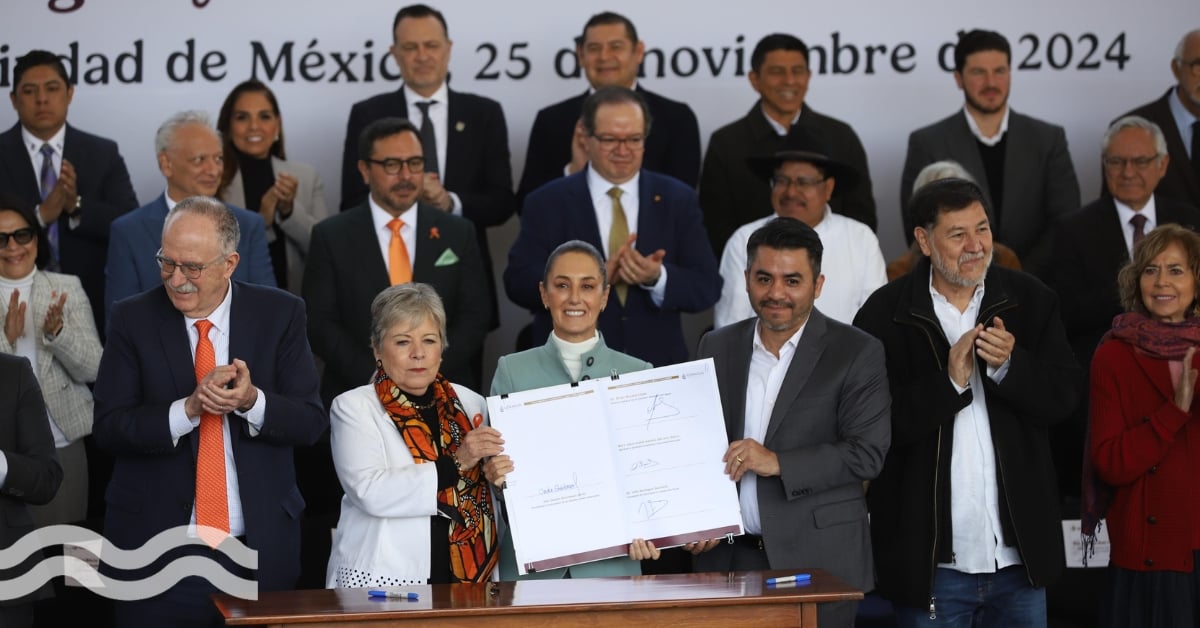A city of mountains: Conserving water in Monterrey, Mexico

Mexican utility Servicios de Agua y Drenaje de Monterrey (SADM) is combatting water scarcity issues in Nuevo Leon through pressure regulation and increased real-time monitoring.
Water scarcity issues in north Mexico
Like much of northern Mexico, Nuevo Leon is suffering from drought conditions and water scarcity, caused by a combination of low rainfall, climate change and poor infrastructure. It is one of six states currently facing water scarcity challenges.
Nuevo Leon has only four per cent of the Mexican population but accounts for eight per cent of the total GDP. The state’s largest city is Monterrey, which is also the second largest metropolitan area in the country. This large population increases each year with as many as 140,000 Mexicans migrating to the city every year.
The growing population, industrial demand and a drought that began in 2015 all add to the strain on the state’s water infrastructure.
We are located in the driest water basin in Mexico, we don’t have water availability like in south Mexico which has lots of rivers.
Eduardo Ortegon Williamson, director of technology and innovation, SADM, told Aquatech Online: “It puts extra stress on the hydraulic situation. We are one of the few utilities that serves the whole state, and we are the only one in Mexico that treats its own wastewater.
“We have 600mm of rainfall per year on average, but we have extreme variability, we have had drought since 2015, but we also have devastating hurricanes. We are located in the driest water basin in Mexico, we don’t have water availability like in south Mexico which has lots of rivers.
Huge gap between supply and demand
The ongoing drought conditions increased the importance of conserving water. The situation had reached crisis point in 2022.
“We were forced to give intermittent water supply to parts of the city,” Ortegon Williamson said.
For 30 years the utility had provided 24/7 supply of water to the city. It used to rely just on underground water, but then the La Roca dam was built, followed by two more with work underway on a fourth dam. To date, around 40 per cent of the water comes from underground and the rest from the dams.
“Most of Mexico has intermittent supply but they are ready for it, they have storage tanks in their houses,” he adds.
The forecasts showed that there was going to be a huge gap between demand and the supply we could offer.
“We started this administration in October 2021, at a time when the forecasts showed that there was going to be a huge gap between demand and the supply we could offer. This was mainly because the Cerro Prieto Dam was completely dry, with El Chuchillo now almost also almost depleted.”
The director of technology and innovation went on to say: “There was a plan to build new shallow and deep wells, repair leaks, floating pumps in the dams, there was emergency legislation to allow us to do things quicker, we put water tanks and water dispensers across town.
“We were delivering water, but it was a nightmare, we didn’t have the infrastructure or the water to be fair to everyone. Some parts of town had no problem; in the northwest of town, they lacked water for a long time.”
The way forward, pressure regulation and monitoring
Most of the actions taken in Monterrey to tackle water scarcity had focused on finding and supplying more water. Ortegon Williamson decided to tackle the demand side.
“In Cyprus, work showed that a lot of water was lost to leaks through the opening and closing of valves. I was also conscious of the four vectors of the International Water Association, one of which was ‘implementing measures to curtail water losses and improve system efficiency’ through pressure management.”
Monterrey had already benefited from a project that started in 1997, to install almost 3000 DMAs of 500 metres each, dividing the metropolitan area into 111 macro sectors and 2864 circuits. The project had attempted to regulate water pressure in parts of the city that had suffered from low pressure supply.
“This produced good results, but it failed to solve the problems because the DMAs were not metred, so we set out to rapidly set out to fit them with instrumentation.”
The valves were installed with flow meters and data loggers that allowed both remote control of water flow and real-time visual monitoring of the resilience and operational quality of the system.
These measures help to pinpoint leaks, aid decision making and help to quantify water savings in the system.
We reduce the pressure and though we have the same number of leaks, less water is lost.
“Some parts of town always had water and lots of pressure, but the pressure in the system wasn’t enough to give everyone equal access to water. So, where we could lower the pressure in the system, we did.
“In Garcia, which was one of the most affected areas, before pressure management we gave them around 4.5kg/cm2 of pressure, expending 863 m3 per day in this DMA. With intermittent water supply we saved them around 6 per cent and we gave them water for good periods of time. But by implementing this programme we were able to give them water all day and all through the week, and we saved them 37 per cent.”
“We have night and day pressure; at night, when no-one is using the water, there are more leaks, so we reduce the pressure and though we have the same number of leaks, less water is lost.”
We decided to put the city, hydrologically, on the same level.
One of the major problems when it comes to moving water around Monterrey is that it is ‘a city of mountains’, which means it can take a lot of pressure to get water to certain areas.
“We decided to put the city, hydrologically, on the same level. For example, in Terra Nova, a large area of the city, we decreased pressure by 34 per cent. Interestingly, the billing for the area only decreased by 17 per cent, which meant the water supply was more effective.”
Pressure regulation helping to save water
Monitoring flow rates, detecting and repairing leaks, and regulating pressure is making a big impact on water use in Monterrey.
“We give water with 30 per cent less volume and our efficiency went from 55 to 80 per cent. We were able to give water to the city with 1.4 m3/second less than two years before the crisis in 2022 and with fewer complaints from our customers.
During the crisis, which began in 2022, SADM made a commitment to the UN to reduce the water needed by the metropolitan area by 15 per cent. After the first six months of 2023, SADM had delivered 17 per cent less water than the forecast. The amount of water saved provided an extra eight months of supply to the city’s dams. Over an eight-month period, 44 million cubic metres were saved, which equates to 36 days of extra water supply to the whole city.
Over an eight-month period, 44 million cubic metres were saved, which equates to 36 days of extra water supply to the whole city.
“Our current predictions are that we will need 32 per cent less water this year compared to last year. Our instruments show us that during the night flow there have been no new leaks. Once we have the whole system connected, we still have lots of work to do,” adds Ortegon Williamson.
“It is important that we don’t give extra water to people, we can’t ask the population to save water if we give them too much pressure.
SADM is now in the process of implementing its MAN (meter asset management) strategy, which will see the installation of intelligent meters across its system.
After years of drought and depletion of water in two of its main dams, the team at SADM decided to focus on the water already in the system, rather than find new sources. By monitoring its DMAs and regulating pressure, it found a solution to tackle the problem of intermittent supply among the citizens of Monterrey, while helping to retain more water in its dams.
By monitoring its DMAs and regulating pressure, it found a solution to tackle the problem of intermittent supply among the citizens of Monterrey, while helping to retain more water in its dams.
The topics of infrastructure upgrades and combatting water scarcity will be addressed during the next Aquatech Mexico, taking place in Mexico City during September 3-5, 2024. For more information, visit the Aquatech Mexico page here.
Share your water technology stories with us
Do you have an innovation, research results or an other interesting topic you would like to share with the international water technology industry? The Aquatech website and social media channels are a great platform to showcase your stories!
Please contact our Sr Brand Marketing Manager Annelie Koomen.
Are you an Aquatech exhibitor?
Make sure you add your latest press releases to your Company Profile in the Exhibitor Portal for free exposure.

.jpg?h=628&iar=0&w=1200)
